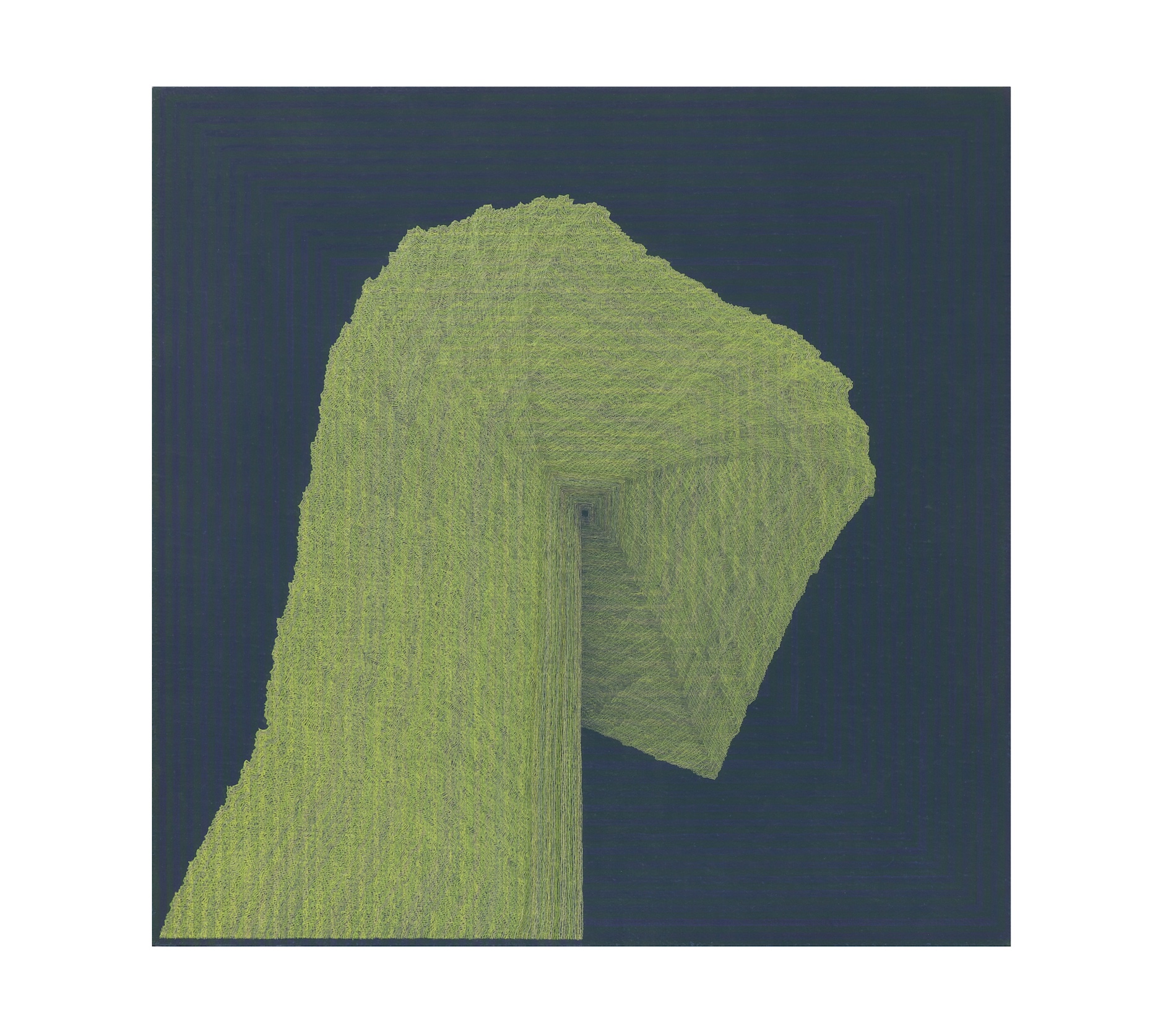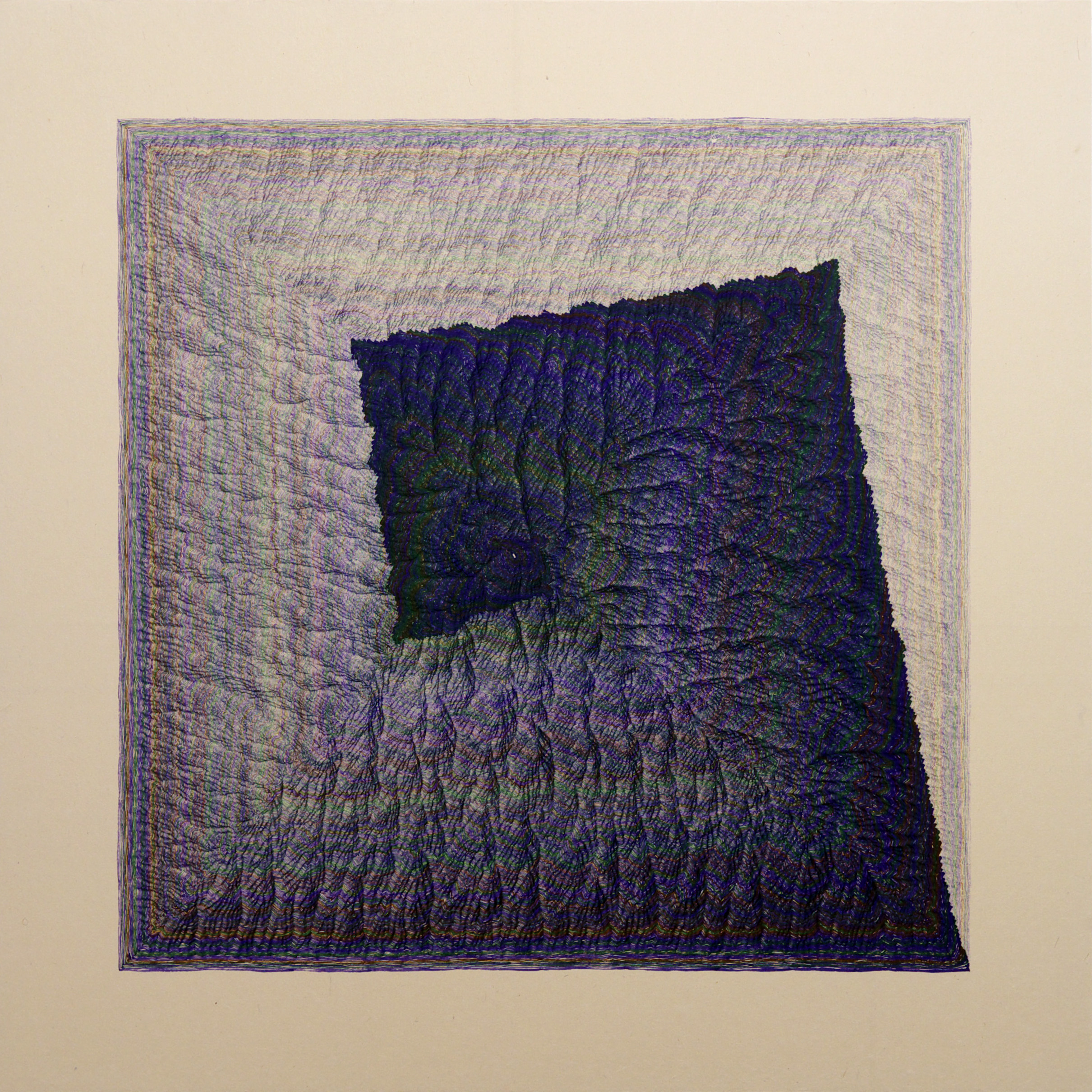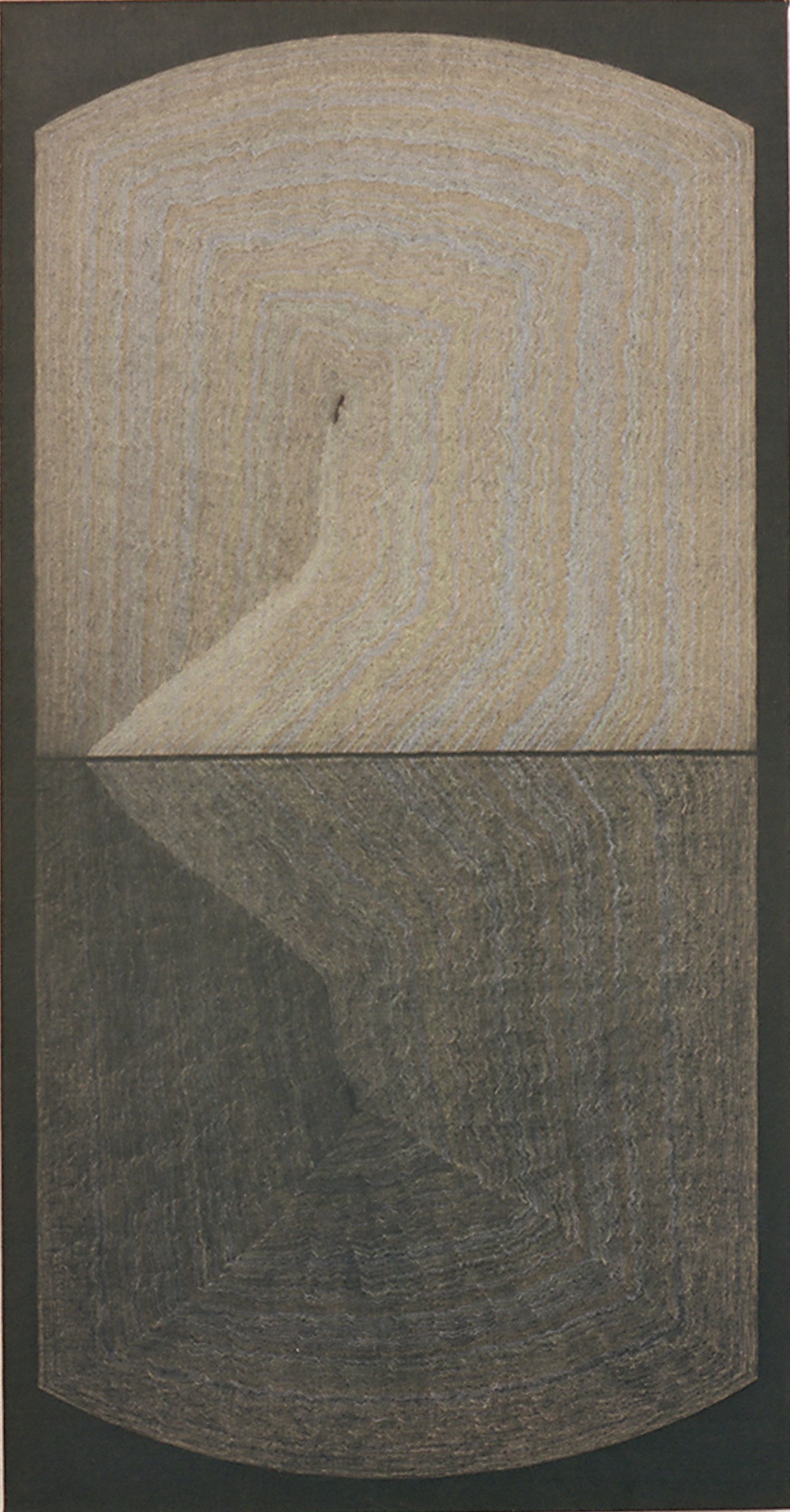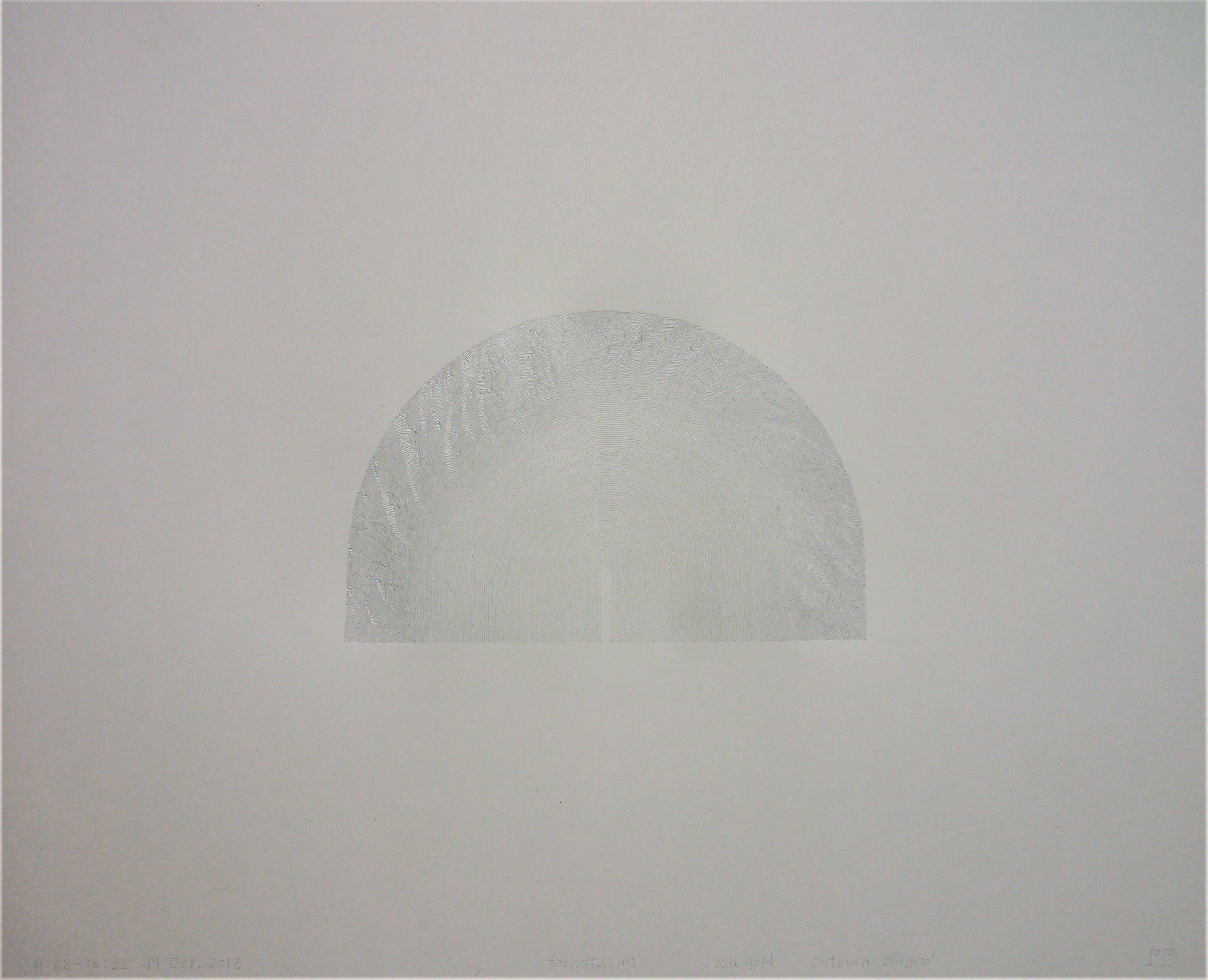Susumu Takashima

【Japanese]
1959 兵庫県生まれ
1982 武蔵野美術大学造形学部建築学科卒業
1984 武蔵野美術学園油絵科修了
1987 アジェンデ美術学校(メキシコ)に1年留学
高島進はインク、筆、色鉛筆などの特徴を生かした、彼にしかできない手法で作品を作る。
彼の作品は、筆のインクの減少、あるいは色鉛筆や金属の芯の摩耗によって太さがかわっていく線を、並べて反復して描くことでできあがる。彼の作品は、それぞれの素材固有の線の結晶体と言える。
「筆、インクと紙のためのドローイング」「鉛筆削り、色鉛筆とキャンバスのためのドローイング」「金属筆と紙のためのドローイング」等題名は、その手法が、手段と目的を反転させる試みであることを示唆している。それは、その曲が「ピアノとヴァイオリンのための音楽」等、どの楽器のために書かれたのかを示すクラシックの器楽曲のタイトルから着想された。
高島は、制作の手段と目的が変われば作品の意味と内容も、自ずと変化すると信じている。
高島の作品は、時間と集中力を必要とする。
そして、繊細でありながら力強く、美しい。—日本の美術の多くがそうであるように―
▪️個展
2023 画廊香月(東京・銀座)
2022 画廊香月(東京・銀座)
2021 画廊香月(東京・銀座)
2020 ギャラリーモリタ(福岡)
2019 白銅鞮画廊(東京・京橋)
CHANDLER FINE ART(サンフランシスコ)
2018 Shonandai Gallery(東京・六本木)
2017 白銅鞮画廊(東京・京橋)
2016 Shonandai MY Gallery(東京・六本木)
2014 CHANDLER FINE ART(サンフランシスコ)
2014 Shonandai MY Gallery(東京・六本木)
2013 白銅鞮画廊(東京・京橋)
2012 CHANDLER FINE ART(サンフランシスコ)
2012 Shonandai MY Gallery(東京・六本木)
2011 白銅鞮画廊(東京・京橋)
2011 元麻布ギャラリー佐久平(長野)
2011 Shonandai MY Gallery(東京・六本木)
2010 ギャラリー舫(東京・銀座)
2010 Shonandai MY Gallery(東京・六本木)
2009 Shonandai MY Gallery(東京・六本木)
2008 ギャラリーテムズ(東京・小金井)
▪️ アートフェア
2025 KOBE ART MARCHE 2025(神戸)
具体・九州派からうまれたもの (京都市美術館・別館)
2024 ART KAOHSIUNG(高雄/台湾)
ART FAIR ASIA FUKUOKA 2024(福岡)
ART FORMOSA (台北/台湾)
ART TAICHUNG (台中/台湾)
KOBE ART MARCHE 2024(神戸)
DETAIL(DRAW SPACE/シドニー・オーストラリア)
RULES FOR DRAWING (DRAW SPACE/シドニー・オーストラリア)
ART FUTURE (台北/台湾)
2023 ART KAOHSIUNG(高雄/台湾)
ART FAIR ASIA FUKUOKA 2023(福岡)
「光へ漕ぐ舟」浜口陽三と桑原弘明、高島進、前田昌良(ミュゼ浜口陽三・ヤマサコレクション/東京)
2022 ART FAIR ASIA FUKUOKA 2022(福岡)
ART TAINAN 2022(台南/台湾)
2021 ART TAICHUNG (台中/台湾)
ART TAIPEI 2021(台北/台湾)
ART FAIR ASIA FUKUOKA 2021(福岡)
「鏡中鏡」平松宇造、高島進雙個展(台南索卡藝術中心/台南・台湾)
2018 ART KAOHSIUNG/台湾
2015 YIA International Art Fair/パリ
2014 Contemporary Art Fair Brussels/ベルギー
2012 ArtPadSF、Phoenix Hotel/サンフランシスコ
2010 kunStart/イタリア・ボルザーノ
2010 +PLUS Tokyo Contemporary Art Fair、東美アートフォーラム/東京・新橋
2009 kunStart/イタリア・ボルザーノ
2006 アート上海2006
2006 SCOPE/ ニューヨーク
▪️ アワード
2007 第5回現代日本美術会審査員特別賞
2002 第11回青木繁記念大賞公募展/優秀賞
2000 第14回多摩秀作美術展/大賞
1998 第3回アート公募99企画作家選出作品展/ギャラリー賞
1997 第2回昭和シェル石油現代美術賞展/奨励賞
1997 ABC美術コンクール/優秀賞
1990 第16回日仏現代美術展/日本テレビ奨励賞
▪️ 収蔵
ワシントン・ナショナルギャラリー(U.S.A.)
青梅市立美術館
羽田空港(JAL内ダイアモンドプレミアラウンジ)
■ 道具と素材のためのドローイング ー 高島進
私の作品は、道具や素材別に次の五つに分けられます。
①筆、インクと紙のためのドローイング
②筆、インクと紙のためのドローイング(一筆描き)
③鉛筆削り、色鉛筆とキャンバスのためのドローイング
④金筆、カラージェッソとキャンバスのためのドローイング
⑤金属筆と紙のためのドローイング(金、銀、銅、真鍮)
筆、色鉛筆、金属筆は全て、描き始めから描き終わりまでの間に線の太さが変わって行く筆記用具・素材であり、作品は、そこから生み出される線の集積から成り立っています。
筆の線は、インクを含ませた最初が太く、徐々に細くなり、かすれていきます。逆に色鉛筆の線は、鉛筆削りで尖らせた最初が細く、徐々に太くなっていきます。(最初サンドペーパーで削って尖らせる金属筆も同様)
これら、線のデクレッシェンドやクレッシェンドとも言える、線の太さの変化が私の作品をカタチ作っていくのです。
本来、道具や素材は表現のための手段でしかありません。しかし私の作品では逆に、使われた道具や素材自身が、線の結晶体として表現されるのです。
私は、画材を使って何かを描写するのではなく、むしろ楽器を演奏する音楽家のように、道具や素材自身を描き鳴らそうとしているのかもしれません。
それ故タイトルは、クラシックの器楽曲が「ピアノとフルートのための音楽」等、「楽器のための音楽」であるように、「筆、インクと紙のためのドローイング」等、「道具と素材のためのドローイング」なのです。
■ レビュー
高島進個展-CHANDLER FINE ART- 2014 /11/8-12/30 ( 延長 -2015/1/31 )
San Francisco Chronicle(サンフランシスコ・クロニクル紙 2014/12/6) -批評和訳-
(抜粋)
TAKASHIMA は作品に用いる色の選択、配列、全体像の構成などをサイコロを振ってその出目で決めるようである。タイトルにつけられた不可解な数字にそれが伺われる。しかし、その作品はプロセスを見るとパフォーマンスそのものだ。
『Ia, (筆、インク、紙のためのドローイング) yang 2:1:3:』(2014)とタイトルのついた和紙(マルベリー紙)の大作品では、まず顔料インクをたっぷり含ませた筆を紙面右下のコーナーに持っていくことから始まり、フリーハンドで紙面の周辺をなぞり、インクが乾くにつれ線は薄くなり擦れていく。その後、できる限り最初の線の輪郭に沿って2番目の線へと筆を進め、そしてその内側に3番目というようにやがては紙面を埋め尽くすまで続ける。
TAKASHIMAにとって作品を決定づける唯一他の要素は筆を重ねるにつれ全体像のパターンとして正方形のスパイラルが見えてくることである。これは方向、濃度などが異なる形で彼の作品中で繰り返し見られる形式である。紙面の中心付近に何も施されない隙間を僅かに残す傾向も見られる。
『Ia・・・ yang 2:1:3:』に関して特徴を上げるなら、繰り返し線をなぞることで生じる手の震えから山々の尾根を高い所から見るような形相が一面に刻まれていることである。作品の抽象性が限界まで明白となり、ごく近距離からではあるが信憑性さえも感じさせると言ってよいだろう。
今回の個展では小さいキャンバスにメタルポイント・カラージェッソの新しい作品も見られる。そのうち何点かは、冷気の中で息がかかったようにゴールドやシルバーが微かに刻み込まれ陰を含んだ優雅さをたたえるものもあるが、紙に筆の作品に比べてインパクトに欠ける。
2014年12月5日
アートレビュー: ケネス・ベーカー (サンフランシスコ・クロニクル紙)
http://www.sfgate.com/art/article/William-Harsh-review-Painting-drawing-for-keeps-5937856.php
■ レビュー
Off – Brussels Contemporary Art Fair 2014/4/25-27
Agenda Magazine (アジェンダ・マガジン) -記事和訳-
ブリュッセル内外の現代美術 2014/4/24, 16.35
高島進(1959年生まれ)はインク、筆、色鉛筆などの特徴を生かした、彼にしかできない手法で作品を作る。彼の作品は、鉛筆の芯の摩耗と筆のインクの減少によって太さがかわっていく鉛筆や筆の線を切れ目なく続き描き続けることでできあがる。「筆、インク、和紙のためのドローイング」や「鉛筆削り、色鉛筆、布のためのペインティング(ドローイング)」は、その曲がどの楽器のために書かれたのかを示すクラシカル音楽のタイトルを想起させる。高島の作品は、時間と集中力を必要とする。そして、繊細でありながら力強く、美しい——日本の美術の多くがそうであるように
■ レビュー
パリのキャロ・デュ・タンプルで2015年10月23日から10月25日まで開催された第5回目のYIAアートフェアで作品が展示されたアジアの作家は、驚くほど少なかった。今回は16カ国から65のギャラリーが招待されたが、ギャラリーが招待されたアジアの国は日本と中国だけだった。
数少ないアジアの作家の中で本誌が注目したのは高島進。山の尾根を連想させるモノクロームに近いドローイングの細くてクリーンな線は、われわれの注意を引いた。高島氏は筆や鉛筆を用い、切れ目なく続きながら少しずつ細くなるインクの線で真の「ドローイングのスコア(楽譜、記録)」を作り出す。それは「ゴールドポイント、カラージェッソ、キャンバスのためのドローイング」や「筆、インク、紙のためのドローイング」といった作品タイトルに示唆されている。
文:Mahaut Le Lagadec
【English】
1959 Born in Hyogo, Japan
1982 Graduated from the Department of Architecture of Musashino Art University
1984 Completed from the Department of Oil Painting of Musashino Art School
1987-88 Studied at the Department of Fine Arts of Institute Allende, Mexico
“Susumu Takashima creates works of art using a technique that only he has mastered. He makes use of the peculiarities of ink, brush, and coloured pencils. Each work is made up of an accumulation of lines, whose width changes all the time as a result of the wearing of the point of the pencil and the using up of the ink on the brush. The titles of his works, such as Drawing for Brush, Ink, and Japanese Paper or Peinture pour taille-crayons, crayons de couleur et toiles (“Painting for Pencil-sharpener, Coloured Pencils, and Cloths”), refer to the titles used in classical music, which indicate which piece was written for which instrument.”
“Takashima’s work requires a lot of care and patience. His works are extremely delicate, but at the same time strong and beautiful, which is a characteristic of Japanese art.”
▪️ Solo Exhibition (recently)
2023 Gallery Kazuki, Tokyo
2022 Gallery Kazuki, Tokyo
2021 Gallery Kazuki, Tokyo
2020 Gallery MORYTA, Fukuoka
2019 Chandler Fine Art, San Francisco, CA
2018 Shonandai Gallery, Roppongi, Tokyo
2017 Gallery Hakudotei, Kyobashi, Tokyo
2016 Shonandai MY Gallery, Roppongi, Tokyo
2014 Chandler Fine Art, San Francisco, CA
2014 Shonandai MY Gallery, Roppongi, Tokyo
2013 Gallery Hakudotei, Kyobashi, Tokyo
2012 Chandler Fine Art, San Francisco, CA
2012 Shonandai MY Gallery, Roppongi, Tokyo
2011 Gallery Hakudotei, Kyobashi, Tokyo
2011 Motoazabu Gallery Sakudaira, Nagano
2011 Shonandai MY Gallery, Roppongi, Tokyo
2010 Gallery Beaux, Ginza, Tokyo
2010 Shonandai MY Gallery, Roppongi, Tokyo
2009 Shonandai MY Gallery, Roppongi, Tokyo
2008 Gallery Tems, Koganei, Tokyo
▪️Selected Group Exhibition (recently)
2025 “What emerged from Gutai and the Kyushu-ha’ The Annex of the Kyoto City Museum of Art Kyoto
2024 DETAIL, DRAW SPACE / Sydney, Australia
2024 RULES FOR DRAWING (DRAW SPACE / Sydney, Australia)
2023 “Boats Rowing Toward the Light”: Yozo Hamaguchi and Hiroaki Kuwahara, Masayoshi Maeda, Musée Hamaguchi Yōzō Yamasa Collection,Tokyo
2021 “Mirror in Mirror”: Uzo Hiramatsu & Susumu Takashima Two-Person Exhibition,Tainan Soka Art, Tainan, Taiwan
2018 Takashima + Takaki Exhibition/ Gallery KAZUKI, Ginza, Tokyo
2017 Hideaki Yamamoto, Susumu Takashima Exhibition/ Shonandai MY Gallery, Roppongi, Tokyo
2015 YIA International Art Fair, Paris, France
2014 OFF Contemporary Art Fair, Brussels, Belgium
2012 “Encouragement of learning” at the Museum/ Ome Municipal Museum of art, Ome, Tokyo
2012 ArtPad SF (Phoenix Hotel/ San Francisco)
2011 Kito + Takashima Exhibition/ Gallery Face to Face, Kichijoji, Tokyo
2011 THE 2nd “WHAT IS DRAWING” EXHIBITION/ Galerie Simon, Ginza, Tokyo
2010 +PLUS Tokyo Contemporary Art Fair/ Tobi Art Forum, Tokyo
2010 Art Kite Show/ Gallery of Shizuoka University of Art and Culture, Hamamatsu/ Chandler Fine Art, San Francisco
2010 kun Start/ Borzano, Italy
2009 kun Start/ Borzano, Italy
▪️Art Fair (recently)
2025 Art Fair Asia Fukuoka 2025, Fukuoka
2025 KOBE ART MARCHE,Kobe
2024 ART KAOHSIUNG,Kaohsiung Taiwan
2024 Art Fair Asia Fukuoka 2024, Fukuoka
2024 ART FORMOSA, Taipei Taiwan
2024 ART TAICHUNG, Taichung Taiwan
2024 KOBE ART MARCHE,Kobe
2024 ART FUTURE, Taipei Taiwan
2023 ART KAOHSIUNG,Kaohsiung Taiwan
2023 Art Fair Asia Fukuoka 2023, Fukuoka
2022 ART TAINAN, Tainan Taiwan
2022 Art Fair Asia Fukuoka 2022, Fukuoka
2021 ART TAICHUNG, Taichung Taiwan
2021 ART TAIPEI 2021, Taipei Taiwan
2021 Art Fair Asia Fukuoka 2021, Fukuoka
2018 ART KAOHSIUNG 2018, / Gallery MORITA + Gallery KAZUKI, Taiwan
2018 Art Fair Asia Fukuoka 2018, Fukuoka
2018 Affordable Art Fair Hong Kong 2018, China
2017 Affordable Art Fair Brussels 2017, Belgium
▪️Award
2007 The 5th Contemporary Art Society of Japan (Examiner Special Prize)
2002 The 11th Memorial Exhibition of Aoki (Excellent Prize)
2000 The 14th Fine Art Exhibition in Tama (Grand Prix)
1998 The 3rd Contest for the Best Contemporary Art Work ’99 (Gallery Prize)
1997 ‘97 ABC Art Contest (Excellent Prize)
The2nd Showa Shell Contemporary Art Contest (Encouragement Prize)
1990 The 16th Exposition : France-Japan (Nihon TV Encouragement Prize)
Public Collection
Washington National Gallery of Art, USA
Ome Municipal Museum of Art, Ome, Tokyo
Haneda Airport, Tokyo
▪️Drawing for Tools and Materials
My works are divided into five kinds according to the drawing tools and materials; one is “Drawing for Brush, Ink and Paper”, two is “Drawing for Brush, Ink and Paper(one stroke)”, three is “Drawing for Pencil Sharpener, Colored Pencils and Canvas” four is “Drawing for Metal Point and paper and five is “Drawing for Gold Point, Color Gesso and Canvas”. All of the drawings consist of an accumulation of lines, and each line becomes gradually thinner or thicker from the start to the end.
A line drawn by a brush is thickest with full ink at the start, and gradually becomes thinner to be blurred out, just like a decrescendo.
A line drawn by a colored pencil pointed by a pencil sharpener is thinnest at the start,
and gradually becomes thicker, just like a crescendo.
Such changes in thickness of lines will build up a shape in each of my drawings.
Tools and materials are just a means for expression essentially; however, each shape on my works is to express
the structure of tools and materials themselves.
I would rather play tools and materials themselves, just like a musician playing an instrument, than represent something with them.
Therefore the title of my works shall be “Drawing for Brushes, Ink and Paper”, “Drawing for Pencil Sharpeners, Colored Pencils and Paper” and “Drawings for Metalpoint” just like classical music.
▪️ review
A very different combination of chance occurrence and methodical effort informs the work of Japanese artist Susumu Takashima at Chandler Fine Art.
Takashima may roll dice to determine the variety or order of colors that a piece will involve, or its overall dimensions. The cryptic figures in his titles reflect this step. But his drawing process is pure performance.
The large piece on mulberry paper titled “Ia, (Drawing for Brush, Ink and Paper) yang 2:1:3:” (2014) began with him taking a brush full of pigmented ink to the lower right corner of the page and tracing its perimeter freehand, the line thinning and fading as the brush ran dry. Then he painted a second line, following the contour of the first as closely as possible, then a third inside that, and so on until he covered the entire page.
Takashima’s only other ruling decision was that the ink strokes as they accumulated would assume the overall pattern of a square spiral, a format that recurs in his work in different orientations and densities. He also tends to leave a tiny aperture of unmarked paper near the center of a page.
Characteristically, in “Ia.. .yang 2:1:3” the tremors of Takashima’s hand as he traces line after line to produce a field of marks suggests a high aerial view of mountainous terrain. The full extent of his works’ abstraction becomes apparent — we might even say credible — only in a very close view.
The present show includes new works in metalpoint on small canvases prepared with pigmented gesso. Several of them have a shadowy elegance, their incising with gold or silver faint as the steam of breath in cold air, but they lack the impact of the brush-on-paper works.
Kenneth Baker is The San Francisco Chronicle’s art critic. E-mail: kennethbaker@sfchronicle.com Twitter: @kennethbakersf
http://www.sfgate.com/art/article/William-Harsh-review-Painting-drawing-for-keeps-5937856.php
▪️ review
CONTEMPORARY ART IN BRUSSELS/ OUTSIDE 2014/4/24, 16.35
“Susumu Takashima (born in 1959) creates works of art using a technique that only he has mastered. He makes use of the peculiarities of ink, brush, and coloured pencils. Each work is made up of an accumulation of lines, whose width changes all the time as a result of the wearing of the point of the pencil and the using up of the ink on the brush. The titles of his works, such as Drawing for Brush, Ink, and Japanese Paper or Peinture pour taille-crayons, crayons de couleur et toiles (“Painting for Pencil-sharpener, Coloured Pencils, and Cloths”), refer to the titles used in classical music, which indicate which piece was written for which instrument.”
”Takashima’s work requires a lot of care and patience. His works are extremely delicate, but at the same time strong and beautiful, which is a characteristic of Japanese art.”
▪️ review
Published on 24 November 2015
Leave a Comment
YIA International Art Fair
written by Moderneast Magazine
Among the rare Asian artists exhibited, we particularly noticed the work of Japanese, Susumu Takashima (Shonandai Gallery, Tokyo), drew our attention with his almost monochromatic drawing whose slim and clean lines are reminiscent of the steep ridges of mountains. Takashima only works with brushes and pencils and draws from a continuous and gradually shrinking line of ink in order to produce real “scores of drawing”, as suggested in each one of his titles : « Drawing for Goldpoint, Color gesso and Canvas », « Drawing for Brushes, Ink and Paper ».
Mahaut Le Lagadec
http://moderneastmagazine.com/2015/11/24/yia-international-art-fair

Ⅰa(yang) violet: green: orange=3:2: 1 /drawing for brush, ink and paper
pigment ink, Japanese paper, brush (Raphael 8408-4)
900×900mm 9 Dec.2016

shadow(curtain) BG(yang)violet: green: orange=2:1:6
/ drawing for pencil sharpener, colored pencils and canvas colored pencils, canvas, color gesso
845×440mm 27 Jan. 2010

forest (yin) /drawing for gold point and paper
gold point(20K), paper (Cotman 270g/㎡)
370×454 (120×192)mm 11:03-16:32 17 Oct. 2018
Drawing for metal point and paper
【Text Japanese】
素材の強調から生まれる遠近法 ➡️︎ Detail
道具と素材のためのドローイング ー 高島進 ➡️︎ Detail
素材がわたしに描かせている ➡️︎ Detail
ジェシー・エリザベス・アルペリン ➡️︎ Detail
Catherine Yen 亞洲文化協會南三三小集 執行長 ➡️︎ Detail
【Article Japanese】
月刊ギャラリー 2019.9 「素材がわたしに描かせている」 ➡️︎ Detail
高島進個展-CHANDLER FINE ART- 2014 ➡️︎ Detail
Off – Brussels Contemporary Art Fair 2014 Agenda Magazine ➡️︎ Detail
YIA アートフェア 2015 Mahaut Le Lagadec ➡️︎ Detail
【Text English】
Perspective Born from the Emphasis on Materiality ➡️︎ Detail
Drawing for Tools and Material ➡️︎ Detail
The material makes me draw ➡️︎ Detail
Jessie Elizabeth Alperin ➡️︎ Detail
【Article Japanese】
VENTI journal ➡️︎ Detail
【Website English】
VENTI journal ➡️︎ Detail
【Text Chinese】
畫家 高島進 ➡️︎ Detail
Catherine Yen 亞洲文化協會南三三小集 執行長 ➡️︎ Detail
顏雪花 亞洲文化協會南三三小集 執行長 ➡️︎ Detail
【Article English】
Gekkan Gallery Materials Are What Make Me Draw sep 2019 ➡️︎ Detail
A very different combination of chance occurrence and methodical effort informs the work of Japanese artist Susumu Takashima at Chandler Fine Art ➡️︎ Detail
CONTEMPORARY ART INBRUSSELS/OUTSIDE 2014 ➡️︎ Detail
YIA International Art Fair 2015 Moderneast Magazine ➡️︎ Detail
【Website Chinese】
台南意向 《鏡中鏡》平松宇造&高島進 個展 – 離塵 website